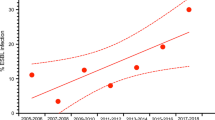Abstract
The interpretation of bacterial cholangitis after liver transplantation (LT) remains vague, because the presence of bacteria in bile, namely bacteriobilia, does not necessarily indicate an active infection. We investigated the association between post-LT bacterial cholangitis and a variety of short- and long-term outcomes. Two-hundred-seventy-four primary adult-to-adult living donor LT recipients from 2008 to 2016 were divided into three groups according the presence or absence of bacteriobilia and clinical symptoms: (1) no bacteriobilia (N group), (2) asymptomatic bacteriobilia (B group), and (3) cholangitis (C group). The number of patients was by group: N, 161; B, 64; and C, 49. Donor age ≥ 45 years (p = 0.012), choledochojejunostomy (p < 0.001), and post-LT portal hypertension (p = 0.023) were independent risk factors for developing cholangitis. Survival analysis revealed that the C group had significantly worse short- and long-term graft survival. The C group was associated with an increased incidence of early graft loss (EGL) (p < 0.001). While the frequency of readmission for recurrent cholangitis was significantly higher in both the B and C groups (p < 0.001), late graft loss (LGL) due to chronic cholangitis was only commonly observed in the C group (p = 0.002). Post-LT cholangitis could result in not only EGL but also chronic cholangitis and associated LGL.



Similar content being viewed by others
References
Boey JH, Way LW (1980) Acute cholangitis. Ann Surg 191(3):264–270
Lea AS, Feliciano DV, Gentry LO (1982) Intra-abdominal infections-an update. J Antimicrob Chemother 9(Suppl A):107–113
Iida T, Kaido T, Yagi S et al (2010) Posttransplant bacteremia in adult living donor liver transplant recipients. Liver Transpl 16:1379–1385
Ikegami T, Shirabe K, Matono R et al (2012) Etiologies, risk factors, and outcomes of bacterial pneumonia after living donor liver transplantation. Liver Transpl 18:1060–1068
Abad CL, Lahr BD, Razonable RR (2017) Epidemiology and risk factors for infection after living donor liver transplantation. Liver Transpl 23:465–477
Brody LA, Brown KT, Getrajdman GI et al (1998) Clinical factors associated with positive bile cultures during primary percutaneous biliary drainage. J Vasc Interv Radiol 9:572–578
Negm AA, Schott A, Vonberg R-P et al (2010) Routine bile collection for microbiological analysis during cholangiography and its impact on the management of cholangitis. Gastrointest Endosc 72:284–291
Munro R, Sorrell TC (1986) Biliary sepsis. Reviewing treatment options. Drugs 31:449–454
Inomata Y, Tanaka K, Egawa H et al (1996) The evolution of immunosuppression with FK506 in pediatric living-related liver transplantation. Transplantation 61:247–252
Raut V, Uemoto S (2011) Management of ABO-incompatible living-donor liver transplantation: past and present trends. Surg Today 41:317–322
Horan TC, Andrus M, Dudeck MA (2008) CDC/NHSN surveillance definition of health care-associated infection and criteria for specific types of infections in the acute care setting. Am J Infect Control 36:309–332
Park JW, Lee JK, Lee KT, Lee KH, Sung YK, Kang CI (2014) How to interpret the bile culture results of patients with biliary tract infections. Clin Res Hepatol Gastroenterol 38:300–309
Ogura Y, Hori T, El Moghazy WM et al (2010) Portal pressure <15 mm Hg is a key for successful adult living donor liver transplantation utilizing smaller grafts than before. Liver Transpl 16:718–728
Sung YK, Lee JK, Lee KH, Lee KT, Kang CI (2012) The clinical epidemiology and outcomes of bacteremic biliary tract infections caused by antimicrobial-resistant pathogens. Am J Gastroenterol 107:473–483
Wu ZW, Ling ZX, Lu HF et al (2012) Changes of gut bacteria and immune parameters in liver transplant recipients. Hepatobiliary Pancreat Dis Int 11:40–50
Zhong L, Men TY, Li H et al (2012) Multidrug-resistant gram-negative bacterial infections after liver transplantation - spectrum and risk factors. J Inf Secur 64:299–310
Kalpoe JS, Sonnenberg E, Factor SH et al (2012) Mortality associated with carbapenem-resistant Klebsiella pneumoniae infections in liver transplant recipients. Liver Transpl 18:468–474
Florescu DF, McCartney AM, Qiu F et al (2012) Staphylococcus aureus infections after liver transplantation. Infection 40:263–269
Verdonk RC, Buis CI, Porte RJ et al (2006) Anastomotic biliary strictures after liver transplantation: causes and consequences. Liver Transpl 12:726–735
Wells MM, Croome KP, Boyce E, Chandok N (2013) Roux-en-Y choledochojejunostomy versus duct-to-duct biliary anastomosis in liver transplantation for primary sclerosing cholangitis: a meta-analysis. Transplant Proc 45:2263–2271
Zhang S, Zhang M, Xia Q, Zhang JJ (2014) Biliary reconstruction and complications in adult living donor liver transplantation: systematic review and meta-analysis. Transplant Proc 46:208–215
Shamsaeefar A, Shafiee M, Nikeghbalian S et al (2017) Biliary reconstruction in liver transplant patients with primary sclerosing cholangitis, duct-to-duct or Roux-en-Y? Clin Transpl 31
Bellot P, Frances R, Such J (2013) Pathological bacterial translocation in cirrhosis: pathophysiology, diagnosis and clinical implications. Liver Int 33:31–39
Schmucker DL, Sanchez H (2011) Liver regeneration and aging: a current perspective. Curr Gerontol Geriatr Res 2011:526379
Yao S, Yagi S, Uozumi R et al (2018) A high portal venous pressure gradient increases gut-related bacteremia and consequent early mortality after living donor liver transplantation. Transplantation 102:623–631
Kubota T, Hata K, Sozu T et al (2017) Impact of donor age on recipient survival in adult-to-adult living-donor liver transplantation. Ann Surg 267:1126–1133
Acknowledgments
The authors are grateful to the members of the infection control team (ICT) in Kyoto University Hospital.
Funding
This research did not receive any specific grant from funding agencies in the public, commercial, or not-for-profit sectors.
Author information
Authors and Affiliations
Corresponding author
Ethics declarations
Conflict of interest
The authors declare that they have no conflict of interest.
Ethical approval
All procedures performed in studies involving human participants were in accordance with the ethical standards of the institutional and/or national research committee and with the 1964 Helsinki declaration and its later amendments or comparable ethical standards.
Informed consent
For this type of study, formal consent is not required.
Rights and permissions
About this article
Cite this article
Yao, S., Yagi, S., Nagao, M. et al. Etiologies, risk factors, and outcomes of bacterial cholangitis after living donor liver transplantation. Eur J Clin Microbiol Infect Dis 37, 1973–1982 (2018). https://doi.org/10.1007/s10096-018-3333-4
Received:
Accepted:
Published:
Issue Date:
DOI: https://doi.org/10.1007/s10096-018-3333-4




